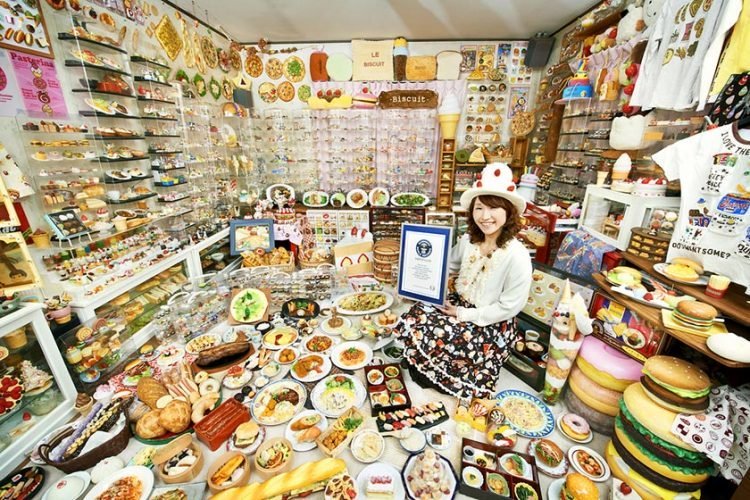
Since a child, Akiko Obata has always been fascinated by plastic food, and 10 years ago she started collecting all sorts of plastic food items, amassing a collection of over 8,000 individual pieces.
"Sampuru", the fake food displays used by most restaurants to showcase their dishes to potential diners, is an important part of Japanese food culture. They are considered superior to menus, as they give customers a much better idea and visualized look of what they'll be getting on their plates, and also help restaurant owners better showcase their dishes. Sampuru makers often go above and beyond to make their products as realistic as possible, and some do really look good enough to eat. Plastic foods are so popular in Japan that some people have actually started collecting them.
Obata, arguably the world's most committed plastic food collector, fell in love with Sampuru over 30 years ago, when her sister brought home a number of discarded fake food displays from the restaurant she was working in. They all looked so deliciously real, and she found them mesmerizing. However, she only started collecting plastic food items 15 years ago, and in 2015 she had already bagged the Guinness World Record for the largest collection of prepared food-related items.
Obata lives in Chiba Prefecture and has a soft spot for plastic desserts, but her impressive collection features all kinds of dishes, from several styles of burgers and pizzas, to spaghetti complete with suspended forks, and traditional Japanese foods like sushi.
"Replicas are not real food, but I truly respect how each of them are made to look so real," the collector told Design Made in Japan.
Obata has a whole room in her home dedicated to her record-setting plastic food collection, and claims that it took Guinness representatives an entire day to go through all her 8,083 items. While some are life-size representations of various dishes, others, like food-shaped key-chains, are tiny.




















Comment